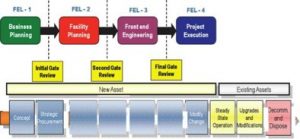The Department of Sustainable Biomaterials (SBIO) at Virginia Tech and conjunction with the Virginia Forest Products Association (VFPA) and Virginia Cooperative Extension (VCE) is offering an educational session on May 15, 2014 as part of the 2014 Richmond Expo organized by VFPA. The educational session is divided in two tracks. The morning track will focus on drying operations and the afternoon track will focus on financial management principles for forest products industries.
The educational session will be conducted at the Four Points by Sheraton located at 4700 South Laburnum Avenue, Richmond, vA 2321. Registration details will be set up soon, so please keep yourself tuned for more details. If you have any questions please contact Angela Riegel at (540) 231-7107 or ariegel@vt.edu. A detailed description of the two tracks can be found in this web address http://sim.sbio.vt.edu/?p=1961
Morning track: Improving The Quality of Lumber Drying Operations
Session Description
 Lumber drying operations, no matter the size, must provide a good quality product to maintain their customer base. Drying defects not only lead to product value losses but if passed onto the customer can lead to lost sales. In today’s business environment, reducing warp, maintaining good color and stain free lumber, and producing stress free lumber with the proper MC is critically important.
Lumber drying operations, no matter the size, must provide a good quality product to maintain their customer base. Drying defects not only lead to product value losses but if passed onto the customer can lead to lost sales. In today’s business environment, reducing warp, maintaining good color and stain free lumber, and producing stress free lumber with the proper MC is critically important.
This session is designed to assist anyone drying lumber from the small-scale lumber dryer to commercial drying operations. The techniques and information presented are relevant to both hardwood and softwood lumber drying operations.
Continue reading “Educational Sessions offered for the 2014 Richmond Expo”


